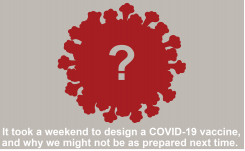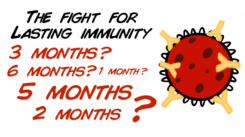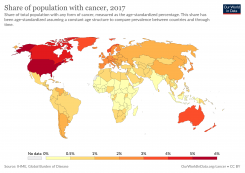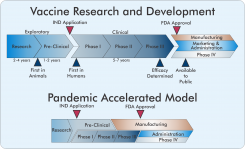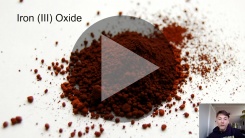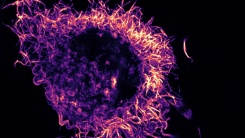ImmuKnow+ is a science publication designed and produced by the Vanderbilt Institute for Infection, Immunology and Inflammation (VI4). All articles are written by Vanderbilt affiliated students, faculty, and staff from various interdisciplinary departments. Our goal is to develop accessible, varied content to inform and educate the public on scientific discoveries and advances within VI4 and its collaborators through a multimedia platform. This publication aims to foster education in science, increase public engagement, and enhance communication between active researchers and the public.
It took a weekend to design a COVID-19 vaccine, and why we might not be prepared next time.
Taylor Engdahl
June 18, 2021
On January 11th, 2020, scientists around the globe awoke to the public deposition of the entire genome for the novel coronavirus – later known as SARS-CoV-2. That weekend, researchers at the University of Texas at Austin designed a vaccine based on the SARS-CoV-2 spike protein, which adorns the surface of the virus. Just two weeks later, scientists at the NIH's Vaccine Research Center started testing the vaccine in animals. This initial design was licensed for use in the first three FDA-approved COVID-19 vaccines. Many contributing factors lead to the expediency of this vaccine design, none of which compromised safety. But how could we rapidly develop a vaccine for a novel virus while other viral targets have remained elusive?... Click the image to the left to continue reading.
SARS-CoV-2 is changing. What does that mean for vaccines and treatments?
Taylor Engdahl
March 8, 2021
Viruses exist in a constant arms race with the host's immune system. As the immune system fights off a virus, the pressure will force the virus to either adapt or disappear. Typos, or mutations, made in the genetic code as viruses replicate enable these adaptations. Many of these mutations are bad for the virus or have little effect, but what if one of these mutations makes the virus better at replicating? In that case, the descendants of that virus will carry the change forward as they spread, and those new viruses will have an advantage over others that lack that particular mutation. We are watching this process unfold right now as new variants of SARS-CoV-2 threaten our current public health efforts. As the virus changes, we may need to adapt our strategies to remain ahead of SARS-CoV-2... Click the image to continue reading.
How good is your memory? Debating the duration of COVID-19 immunity
Caroline Cencer
December 10, 2020
In today’s COVID-19-centric world, it is easy to feel overwhelmed by headlines constantly broadcasting differing timelines of just how long this pandemic could last. One main determinant of the duration of lockdowns and social distancing is the development of a vaccine. The goal is “to create a vaccine that is safe and with good immunogenicity, meaning it stimulates a strong immune response.” Recent developments of COVID-19 vaccine design have promised ≥90% effectiveness, however, we are still missing the second half of the story. It is one achievement to instill COVID-19 immunity in the majority of vaccine recipients, but another to maintain this protection... Click the image to continue reading.
Cancer Vaccines: Are We There Yet?
Sohini Roy, Ph.D.
December 7, 2020
The concept of immunity has intrigued humankind for centuries. From prehistoric times when disease was viewed as a form of punishment for wrong deeds by supernatural forces, to Louis Pasteur’s germ theory of disease, the field of immunology has come a long way. Our immune system comprises of a network of unique cells like macrophages, dendritic cells, T, B and natural killer cells housed by different organs that work to protect us from invading pathogens like bacteria, fungi and viruses. These cells have evolved to identify and neutralize foreign pathogens and keep us healthy. Thumbnail: IHME, Global Burden of Disease. OurWorldInData.org/cancer... Click the image to continue reading.
A COVID-19 Vaccine: Why We Need It and How We Get There Yesterday
Chris Hofmann
December 1, 2020
Vaccines are typically developed through a lengthy, rigorous process that averages 10-15 years from inception to approval. The goal is to create a vaccine that is safe and with good immunogenicity, meaning it stimulates a strong immune response, to generate antibodies which can neutralize an invading pathogen. Given the high infectivity of COVID-19, the vast percentage of the population susceptible to the virus, and the burden it places on the healthcare system, the economy, and our lives, we need a vaccine much sooner than the normal 10-15-year timeline. To achieve a safe and effective vaccine within a reasonable time frame, a massive research effort within academia and the pharmaceutical industry must be undertaken in collaboration with and funded by the United States government... Click the image to continue reading.
Ask a Scientist
November 5, 2020
Do you have a science question? Submit the question in the form below and we'll find the perfect expert at the Vanderbilt University Medical Center to answer it!
Answers will be featured on the ImmuKnow+ homepage as well as the VI4 twitter account. Answers will be done in video form when possible so please allow a week or two for us to turn it around!
Image Feature: Colbie Chinowsky
Colbie Chinowsky and Caroline Cencer
November 5, 2020
This image is a W4 cell that has been treated with Blebbistatin, a myosin-2 inhibitor. Upon treatment with this inhibitor, we observed that the microvilli (actin-based protrusions that allow increased surface area for nutrient absorption in the intestine) elongate far beyond their usual length. These observations, combined with many others, led us to a mechanism called "contractility-dependent actin turnover", which has been observed in other systems, such as the neuronal growth cone. We believe that NM2C likely assists in actin turnover of microvilli, as we also found that NM2C is positioned directly underneath microvilli, in an optimal position to influence the microvillar actin network... Click the image to continue reading.
VI4 Growth
Chris Hofmann
November 2, 2020
Since its inception, 3 years ago, the Vanderbilt Institute for Infection, Immunology, and Inflammation has grown to include 166 faculty and numerous postdocs, students, and staff working together to acquire substantial public and private research funds and to publish rigorous scientific manuscripts in top tier journals. This success stems from a dedicated community who now exist under a framework to maximize education, resources, and collaboration. Critical to meeting our mission is the ability to foster an environment for growth and continued collaboration with state-of-the-art equipment and resources. The VI4 is excited to announce a series of renovations, equipment, and new programs to continue to grow and serve the research community and become a world leader in Infection, Immunology, and Inflammation research... Click the image to continue reading.
Call for Content and Communicators
November 2, 2020
Do you have an institute- or science-related story you’d like people to hear? Are you interested in exploring science communication?
We’re looking for writers and content creators interested in communicating the incredible research efforts, innovation, discoveries, and individuals of the Vanderbilt Institute for Infection, Immunology, and Inflammation (VI4)...Click the image to the left to continue reading.

